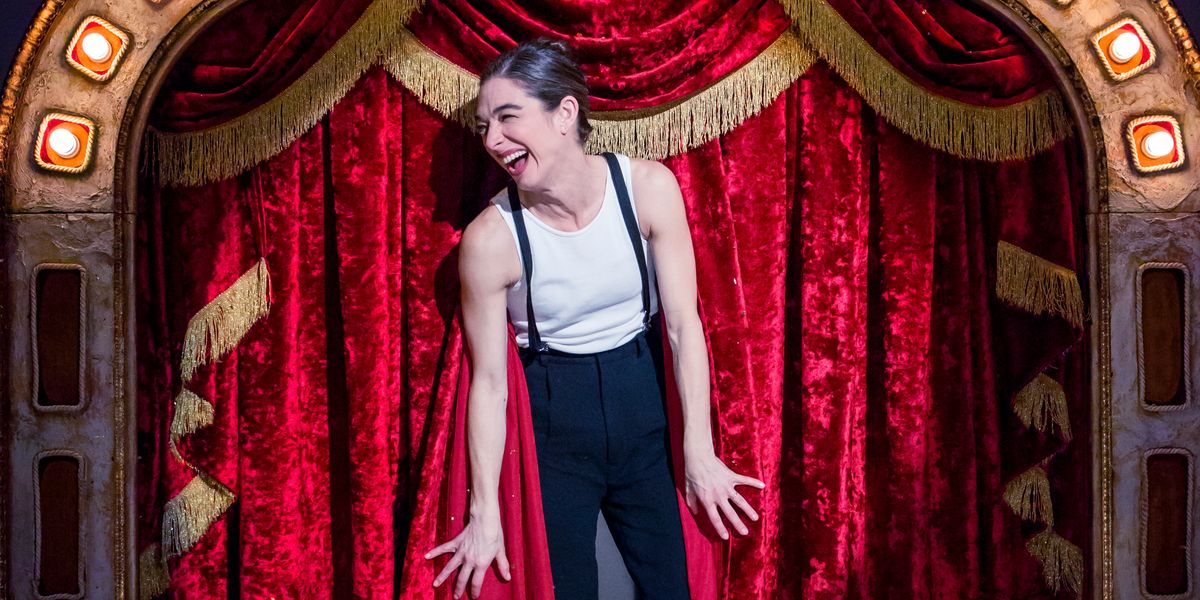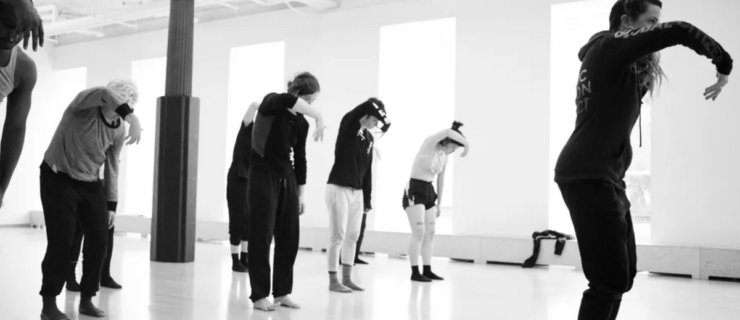Monica Bill Barnes on the Music that Fuels Her Creative Process
Monica Bill Barnes is one of the funniest choreographers working today. And though the style of physical humor she’s crafted with her frequent collaborator Anna Bass could elicit laughs even in dead silence, the pair’s antics are often supplemented with—or juxtaposed against—music choices that feel both unexpected and yet somehow perfectly fitting.
It turns out that music plays a significant role in Barnes’ creative process, too: Even songs that don’t end up in her shows help her develop material and figure out the tone of a work. Barnes talked to us about her relationship with music, and made us a playlist of songs that “feel supportive in nature,” she says. “They’re go-to hits that help me understand something about the material; good fallbacks when I’m not sure where a particular show is heading.”
On Her Taste in Music
“It has something to do with nostalgia. I’m never contemporary. I have no idea what’s happening now. All the music on my phone stops at 1985. So much of this music, I wasn’t alive when it was popular so it’s not reminding me of my own past, but it has some sense of belonging to another era. And I don’t go in on subtle. I’m drawn to big music from opera to Motown to Janis Joplin.
“
We did a show called Happy Hour which is inspired by karaoke, so we listened to a lot of terrible music. My relationship to music is not always led by my sense of taste or what I’d want to listen to while eating dinner.”
On “I’ll Get Along Without You”
“I have one whole playlist that’s just this song but sung by like 20 different people. I’m so influenced by the way a performer’s interpretation of the material changes the way we feel about it.
“
I don’t think I’ll ever actually use the song, partially because it’s so meaningful to me. It’s doing something so simple of saying one thing but meaning another. That duality is something I’m always interested in as a performer. I try to cultivate a conflicted performance so more than one thing is happening at the same time. There’s a striving for something but a simultaneous failing at it.”
 David Wilson Barnes, Courtesy Barnes
David Wilson Barnes, Courtesy Barnes
On How Music Drives Her Creative Process
“
While the material is being developed, that playlist will grow to like 60 songs that feel like they are somehow related to each other. Once the choreography has enough weight to it and develops some sense of purpose, then the music shifts to songs that will juxtapose the choreography rather than support it, which usually leads to the start of a new playlist. Then there’s a third playlist where I start to think about music in terms of, how does an audience hear this and what relationships are they creating? I’ve lost a ton of music where the song has such a clear narrative that I feel is misleading to an audience.”
On La Boheme
“I’m always trying to make something to an opera song and I seldom succeed. La Boheme was the first opera that I went to in New York when I was in grad school, when I walked up to the Met and decided that I should see an opera. I got standing room and when I got my ticket I mispronounced the title of the show so horribly. I was so wonderfully out of place.”
 Julia Discenza, Courtesy Barnes
Julia Discenza, Courtesy Barnes
How She Finds New Music
“Really haphazardly. I don’t know anything about country music but this one Merle Haggard song got me so interested. Without rhyme or reason I just started to listen to more Merle Haggard, and then he would do a duo with Billie Joe Shaver and I would listen to Billie Joe Shaver and one thing would lead to another.
“
Audiences are so profoundly influenced by sound and yet the process of discovering that feels both constant and daily but also purposefully a bit wandering. In New York, I’m living in a city where you interact with sound constantly, so a car will pass and they’ll be blasting a song and I’ll get interested in that. So I’m very easily influenced. I can just go down the rabbit hole after hearing something on the subway. I feel like that’s a nice byproduct of a job that I’ve decided to make for myself that listening to music is something I feel OK really focusing on every day.”

On Live Recordings
“Hearing a performer talk before and after the song, I find that fascinating because I feel like it indicates the picking up of a performer persona. You have yourself and then this version of yourself that’s you onstage.
“
I always feel like the live recordings indicate the way the performer likes to sing the song. With The Rolling Stones’ ‘Start Me Up,’ the studio version is so much better and nuanced and interesting but the live recording is somehow so much more fun.
“
Live recordings are often wonderfully complicated. There are moments of ridiculous, careful listening when I’m with my notebook trying to understand something about the musical structure or the timing. Mistakes are happening, not everything is even. I can’t read music so I’m notating the structure of the song but in a completely made-up form.”




